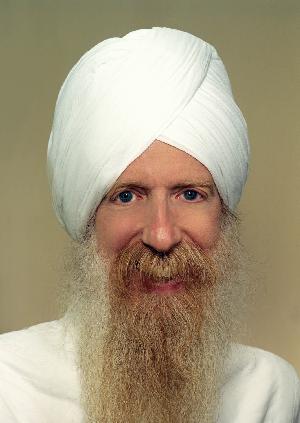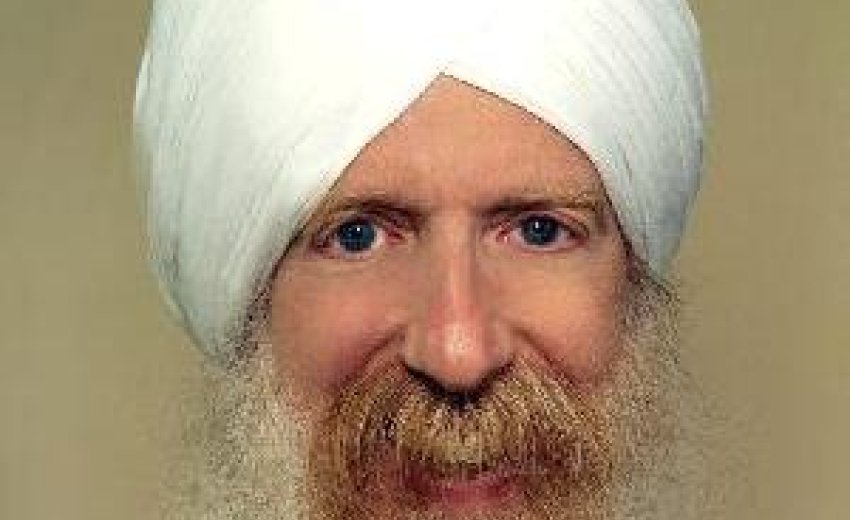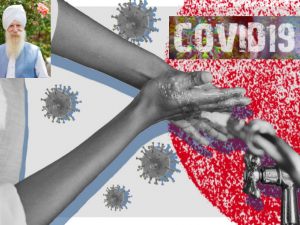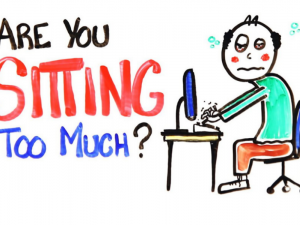 Our faith in our Guru gives us so many riches and so much happiness. To make a riddle, in the face of all that the Guru gives us, what is it that most Sikhs do not have? The answer to this question is something that I see in my office all the time. Almost none of us have enough vitamin D to keep us at optimal health!
Our faith in our Guru gives us so many riches and so much happiness. To make a riddle, in the face of all that the Guru gives us, what is it that most Sikhs do not have? The answer to this question is something that I see in my office all the time. Almost none of us have enough vitamin D to keep us at optimal health!
I first learned about the importance of vitamin D over five years ago. When I first measured my own blood level, I was shocked to see that I was extraordinarily low. This was in spite of all the many vitamins that I take to stay healthy. We get most of our vitamin D from exposure of our skin to the sun, and I realized that because I always wear full Bana, almost all of my skin is blocked from the sun. In addition I put sunblock on my face in order to not get skin cancer. Over the last five years I have normalized my own and many of my Sikh friends vitamin D levels by directly supplementing them.
My own health including my sense of well-being and the ability of my immune system to fight colds and flus has markedly improved. My energy and vitality also are significantly better. All of my Sikh friends, as well as all my patients have noticed big improvements in their health and well-being from taking the correct dose of vitamin D.
Vitamin D deficiency is now associated with 17 varieties of cancer, high blood pressure, coronary artery disease (heart disease), as well as diabetes and most recently autism. The benefits for these diseases occur only when the vitamin D level in the blood tests significantly over 30 ng/ml and preferably over 40 ng/mg. Prior to the recent studies of the last 10 years it was believed that a vitamin D level around 20 ng/ml was sufficient.
Indeed this level is ONLY sufficient to prevent rickets. It will not benefit in preventing these other diseases whose relationship to vitamin D has been newly discovered in the last 10 years. To get benefit for protection against those diseases your level must be over 30 or preferably over 40 ng/ml.
Let me give you a specific example of the power of Vitamin D to protect us. In 2007, researchers Grant, Garland, and Gorham estimated that it would cost $1 billion each year to provide all adult Americans with 1,000 IU of vitamin D daily. They also estimated that in the United States, the daily provision of 1,000 IU of vitamin D would reduce cancer mortality for females by 9 percent and by 7 percent for males. The researchers estimated that this would reduce the country’s annual cost of cancer treatment by USD16 billion to USD 25 billion. And that is just treatment costs. We should also add the emotional and psychological costs to patients, family and friends.
To my brothers and sisters in India who are reading this article: Vitamin D deficiency is extremely widespread in cities in India because of poor sunshine exposure and also because of skin pigmentation.
Because India is approximately 70% rural, and because there is so much sun, it has long been assumed that vitamin D deficiency in rural India would not be a problem, given the sun exposure.
Now an article has appeared in October 2008 that evaluated 200 families’ in a rural community east of Delhi in February. The highest level of vitamin D in all the subjects was 23 ng/ml. The average vitamin D level was 14.5 which is rickets causing level!
In the people with five hours of daily sunshine exposure, only 31% had vitamin D levels over 20 ng per milliliter which is again rickets level. Therefore 70% of people in this study in rural India had significant vitamin D deficiency. I encourage all of our brothers and sisters in India to be sure to have their vitamin D blood level checked and to take enough vitamin D every day to keep their blood levels normal.
Another recent medical study has found that in spite of all the sunshine, over 88% of adolescent girls in a rural Indian community were deficient in vitamin D. In addition 74% of the pregnant women in this same community had vitamin D deficiency. If the mothers are low in vitamin D than certainly their fetuses will also be low in vitamin D. In addition, nursing women with low vitamin D will not provide enough vitamin D to their newborns. Low vitamin D levels in young children are now being associated with an increased incidence of the triple childhood epidemics of asthma, juvenile diabetes, and autism. Because of my excitement about the power of this vitamin, in May 2008 I decided to write a book for the layman about vitamin D. I am very happy to announce to the Sangat that this book is now released and available at Amazon.com and also on my website.
Because of my excitement about the power of this vitamin, in May 2008 I decided to write a book for the layman about vitamin D. I am very happy to announce to the Sangat that this book is now released and available at Amazon.com and also on my website.
Through modern technology I am now also able to offer everybody an at- home vitamin D test kit. This way everyone can measure their own vitamin D level and then bring their levels up to normal or optimal.
In addition I have decided to create my own brand of vitamin D capsules so that I am able to provide guaranteed quality for everybody who wants to replace their vitamin D. I have partnered with a company which normally only makes products for physicians’ offices. We will also be able to make this pharmaceutical quality vitamin D available to the consumer at supermarket prices.
By way of simple suggestion, if you do not have a blood test, as an otherwise healthy adult, you can safely start on vitamin D 2000 IU per day and it will at least give you a moderate benefit of vitamin D protection. Of course optimally you should get a blood test with your physician or through a home test kit and find out exactly what your level is so that you may bring it up exactly to an optimal level.
I encourage all my brothers and sisters in the Sikh faith to get their blood tested as soon as possible for vitamin D and to learn to optimize their levels.
To read and understand more about this important health issue. please visit my website www.vitaminDrevolution.com






